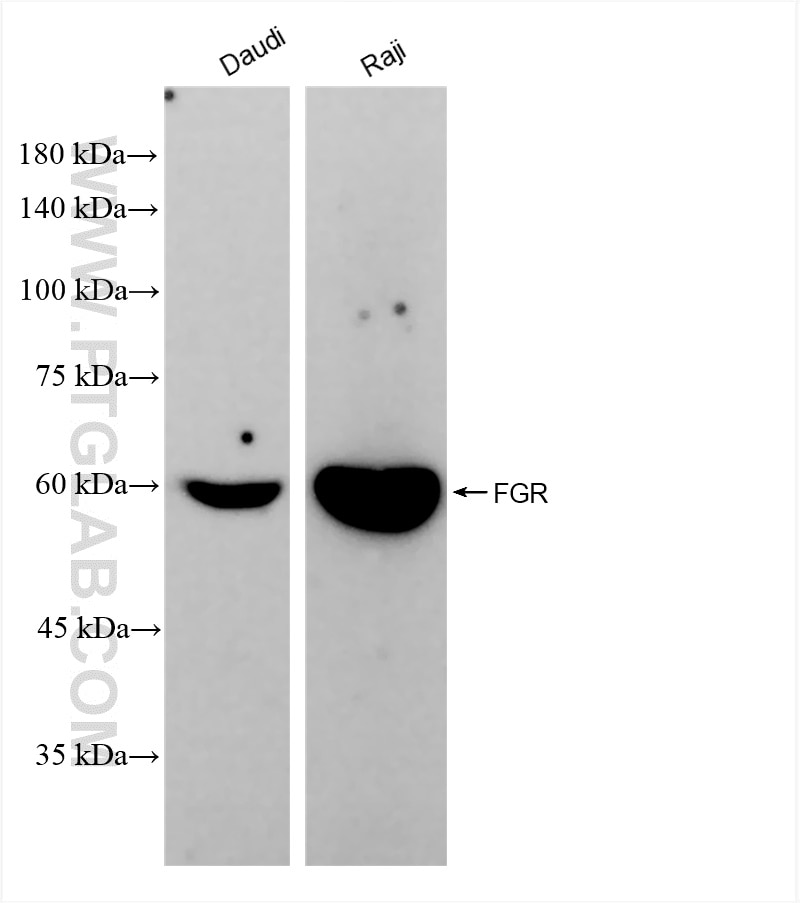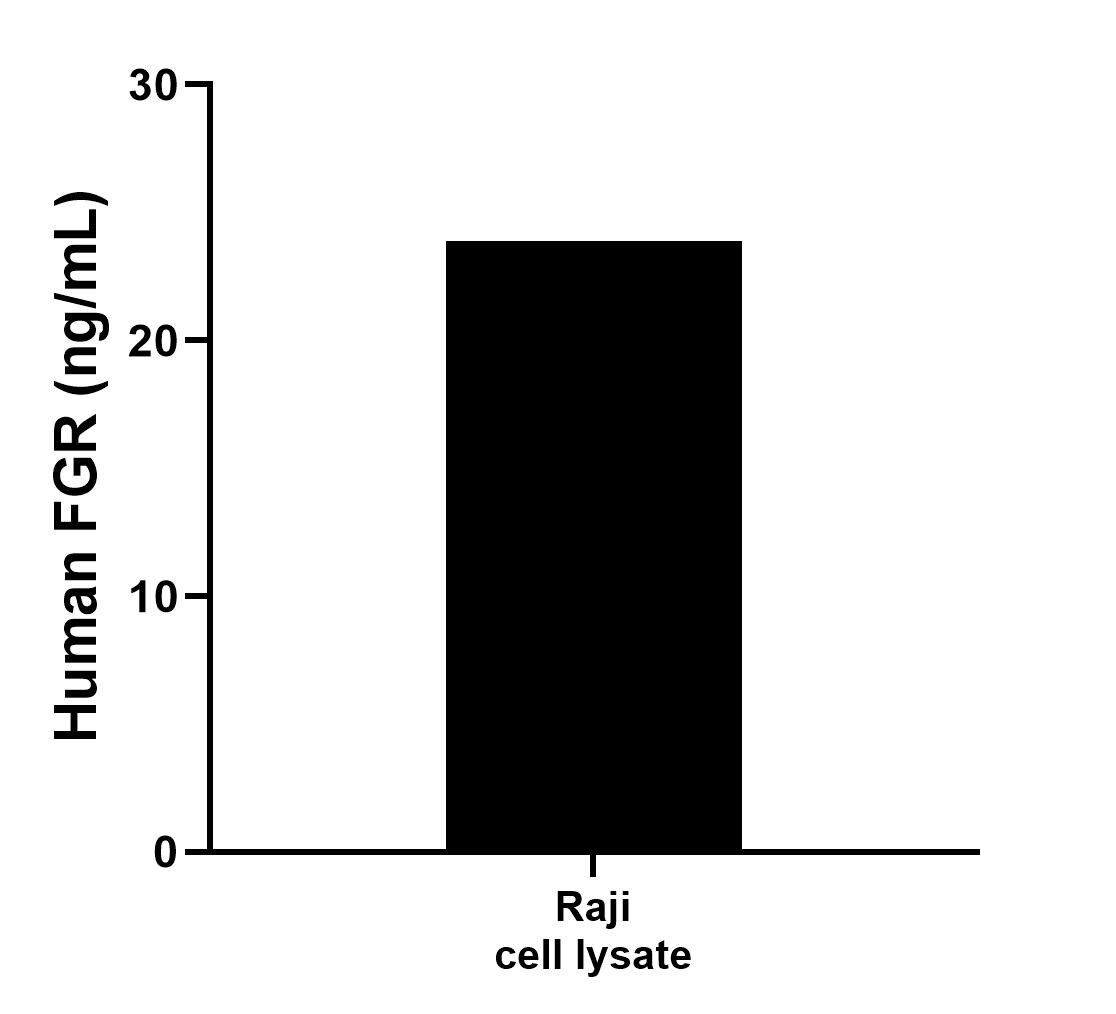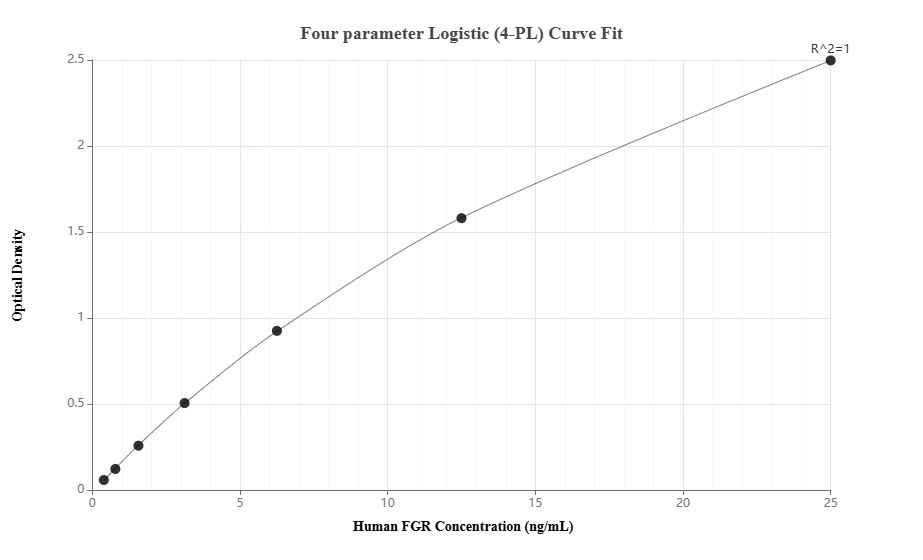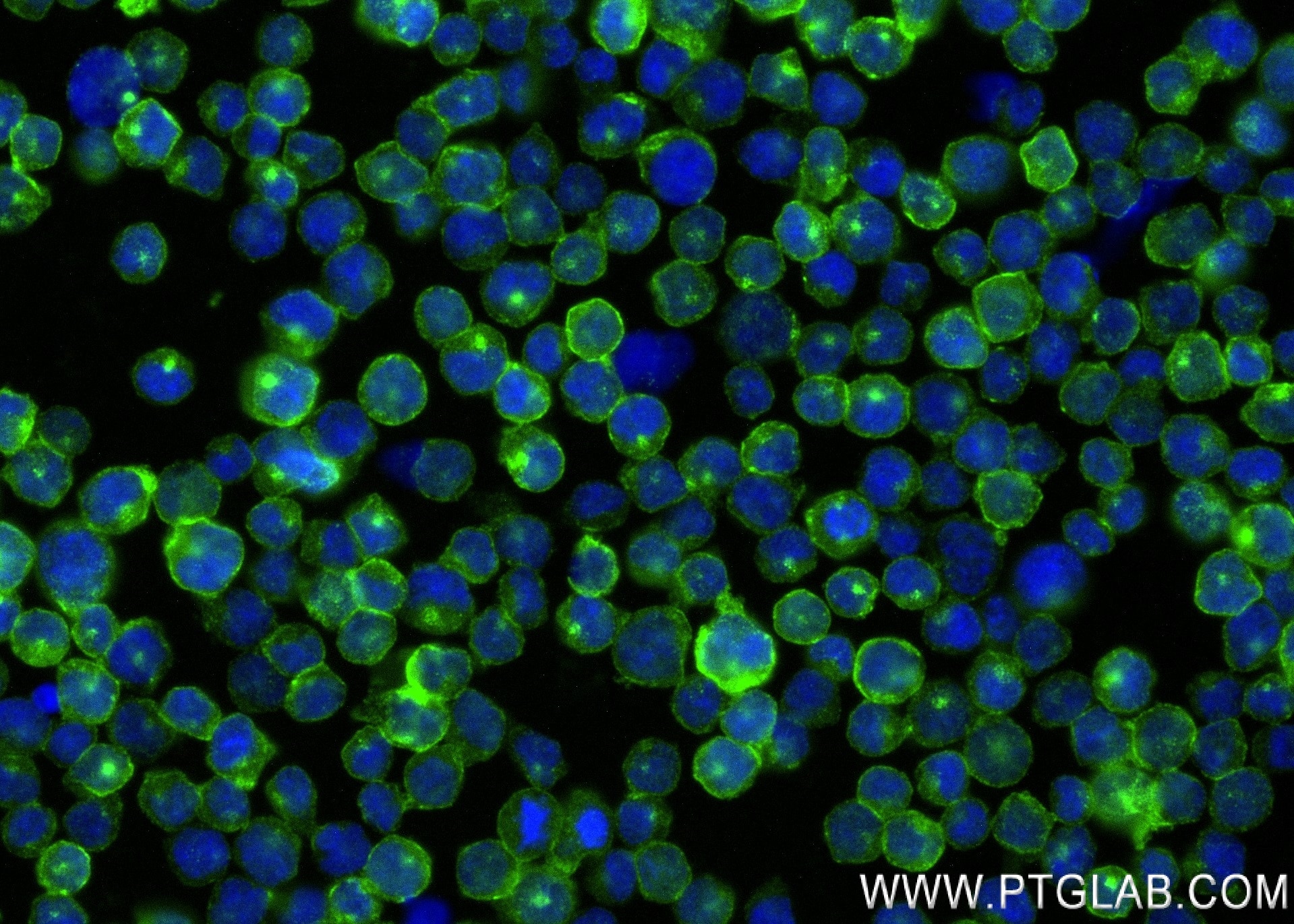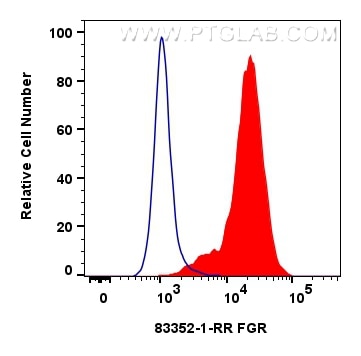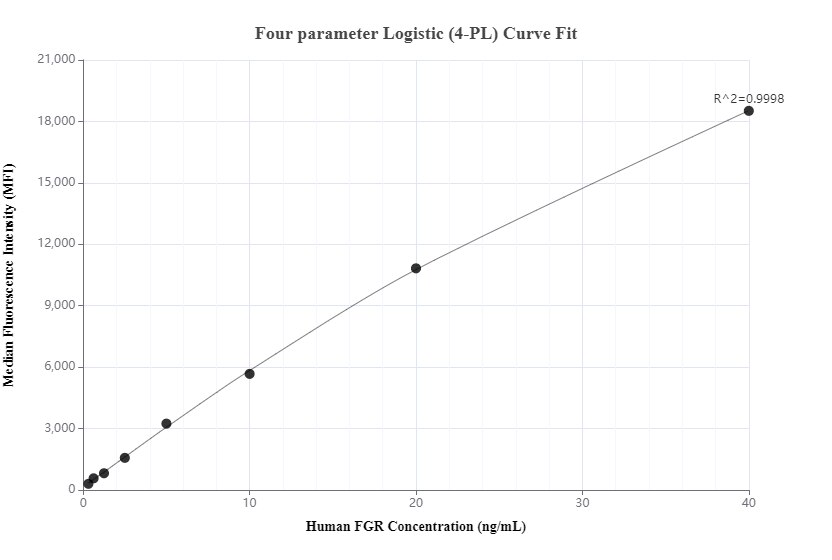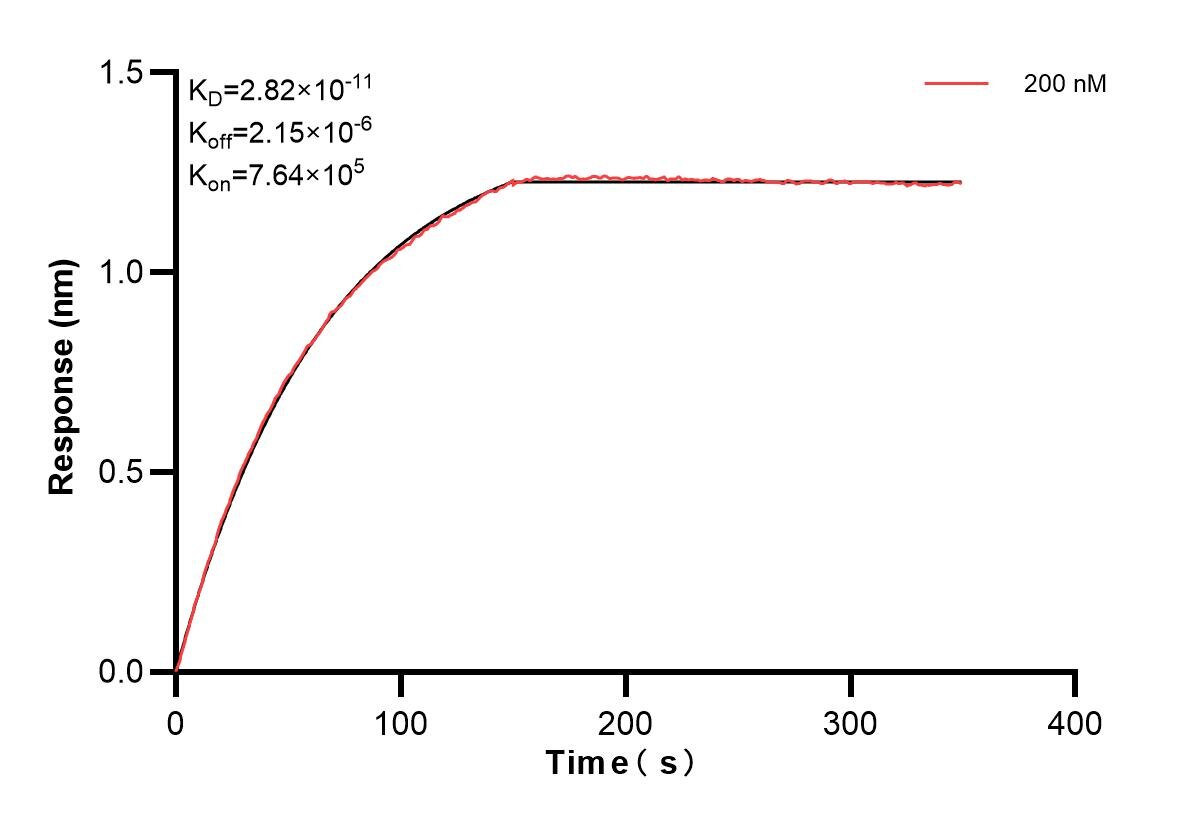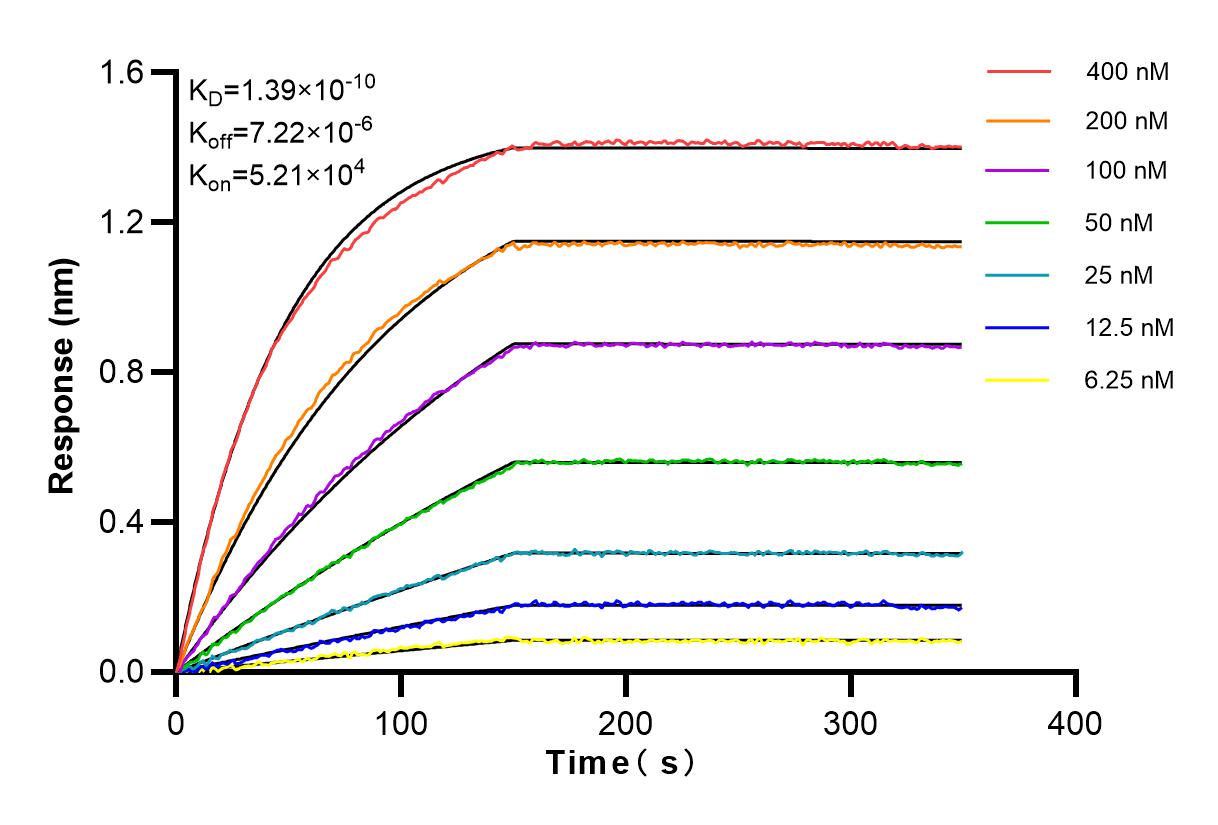Validation Data Gallery
Tested Applications
Recommended dilution
| Application | Dilution |
|---|---|
| It is recommended that this reagent should be titrated in each testing system to obtain optimal results. | |
Product Information
83352-1-PBS targets FGR as part of a matched antibody pair:
MP00370-1: 83352-1-PBS capture and 83352-3-PBS detection (validated in Cytometric bead array, Sandwich ELISA)
Unconjugated rabbit recombinant monoclonal antibody in PBS only (BSA and azide free) storage buffer at a concentration of 1 mg/mL, ready for conjugation. Created using Proteintech’s proprietary in-house recombinant technology. Recombinant production enables unrivalled batch-to-batch consistency, easy scale-up, and future security of supply.
This conjugation ready format makes antibodies ideal for use in many applications including: ELISAs, multiplex assays requiring matched pairs, mass cytometry, and multiplex imaging applications.Antibody use should be optimized by the end user for each application and assay.
| Tested Reactivity | human |
| Host / Isotype | Rabbit / IgG |
| Class | Recombinant |
| Type | Antibody |
| Immunogen |
CatNo: Ag34944 Product name: Recombinant human FGR protein Source: e coli.-derived, PGEX-4T Tag: GST Domain: 1-90 aa of NM_005248 Sequence: MGCVFCKKLEPVATAKEDAGLEGDFRSYGAADHYGPDPTKARPASSFAHIPNYSNFSSQAINPGFLDSGTIRGVSGIGVTLFIALYDYEA 相同性解析による交差性が予測される生物種 |
| Full Name | Gardner-Rasheed feline sarcoma viral (v-fgr) oncogene homolog |
| Calculated molecular weight | 59 kDa |
| Observed molecular weight | 60 kDa |
| GenBank accession number | NM_005248 |
| Gene Symbol | FGR |
| Gene ID (NCBI) | 2268 |
| Conjugate | Unconjugated |
| Form | |
| Form | Liquid |
| Purification Method | Protein A purification |
| UNIPROT ID | P09769 |
| Storage Buffer | PBS only{{ptg:BufferTemp}}7.3 |
| Storage Conditions | Store at -80°C. |
Background Information
FGR (Tyrosine-protein kinase Fgr) is a member of the Src family of protein tyrosine kinases (PTKs). It's contains N-terminal sites for myristylation and palmitylation, a PTK domain, and SH2 and SH3 domains which are involved in mediating protein-protein interactions with phosphotyrosine-containing and proline-rich motifs, respectively.

